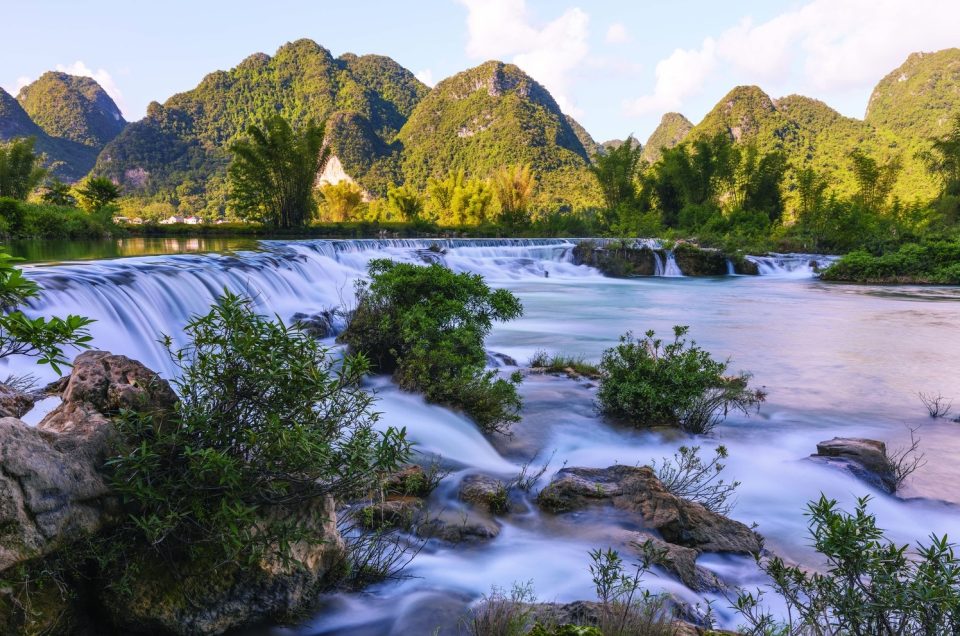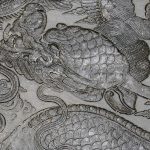Sacred waters on the frontier
The borderland region of Cao Bang is home to many historical sites, including Pac Bo Cave, Le Nin Stream, and landmarks linked to ancient dynasties such as Mac Citadel and King Le Temple. The four main river systems in Cao Bang – Bang Giang, Quay Son, Gam, and Bac Vọng – contribute to the region’s picturesque scenery. Among them, the Quay Son River (also known as the Que Son) leaves the deepest impression as it forms a natural border between Vietnam and China. With its clear blue water flowing year-round, the Quay Son River winds through limestone mountains and runs freely through lush valleys and rice fields that sway in the wind.

In Sino-Vietnamese, the name Quay Sơn means “surrounding the mountains”. The river originates from streams in Jingxi (China), enters Vietnam in Ngoc Con commune, Trung Khanh district, Cao Bang province, and flows through the communes of Dinh Phong, Chi Vien, and Dam Thuy (Trung Khanh district), then through Ha Lang district before returning to China. The river is nearly 90 km long, with about 50 km flowing through Vietnamese territory, along with a tributary, Can Stream, which is 20 km long.

Sitting on a raft drifting along this river, visitors feel as if they are on the set of a historic film. The emerald water and mountain scenery make the phrase “sơn thủy hữu tình” (picturesque landscape) more meaningful than ever. Along the riverbank lie villages of ethnic Tay and Nung people. After the rain, bright red forest flowers blaze on the cliffs, and swaying white reeds are reflected on the river, immersing visitors in a world of romance and tranquility. Standing on the watchtower of the Dam Thuy border post, the Quay Son River appears like a beautiful stroke of nature’s brush on the landscape’s canvas, turning every place it flows through into a “fairyland”.

The river’s silt-laden waters weave a tapestry of transformation along its banks. In some places, the emerald green water is calm and contemplative as it winds around towering cliffs. In others, it is gentle and soft under lush green bamboo groves. In some stretches, the river flows like a soft veil through vast golden rice fields.

For those who prefer tranquility, visit the Quay Son River at dusk. As the sun sets, the forest trees silently reflect on the water. The peaceful yet lively scene is accentuated by a few rafts with locals casting nets to catch fish. Near small waterfalls, visitors can see wooden rice pounders powered by the running water or water wheels rhythmically turning over time.

Every Vietnamese person’s heart fills with the patriotic emotions of the borderlands and the nation’s frontier when standing before Ban Gioc Waterfall – a masterpiece of the Quay Son River. The water suddenly cascades from over 30 meters, forming two waterfalls amidst the majestic mountains. Many international organizations consider Ban Gioc one of the world’s most beautiful waterfalls. The water does not fall directly but splits into multiple tiers, creating white ribbons intertwined with the colors of forest leaves and flowers. Near Ban Gioc Waterfall lies Nguom Ngao Cave – a natural maze with magnificent stalactites and captivating stories of the past.






